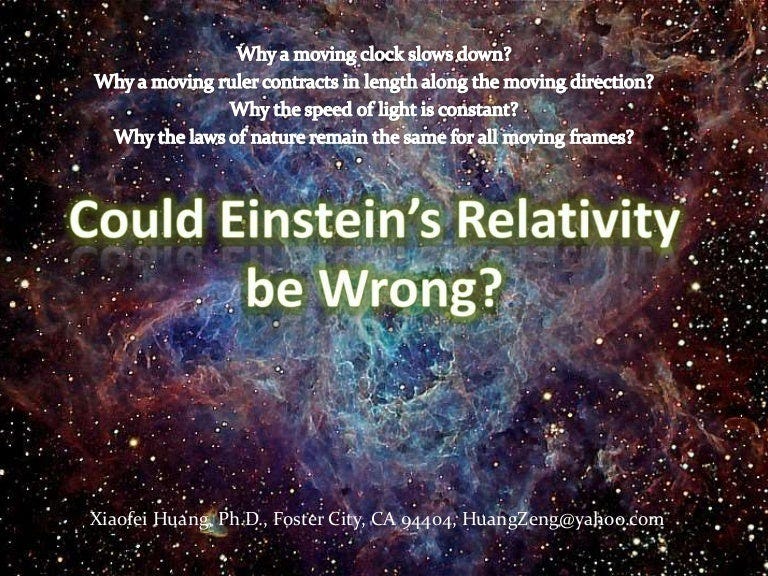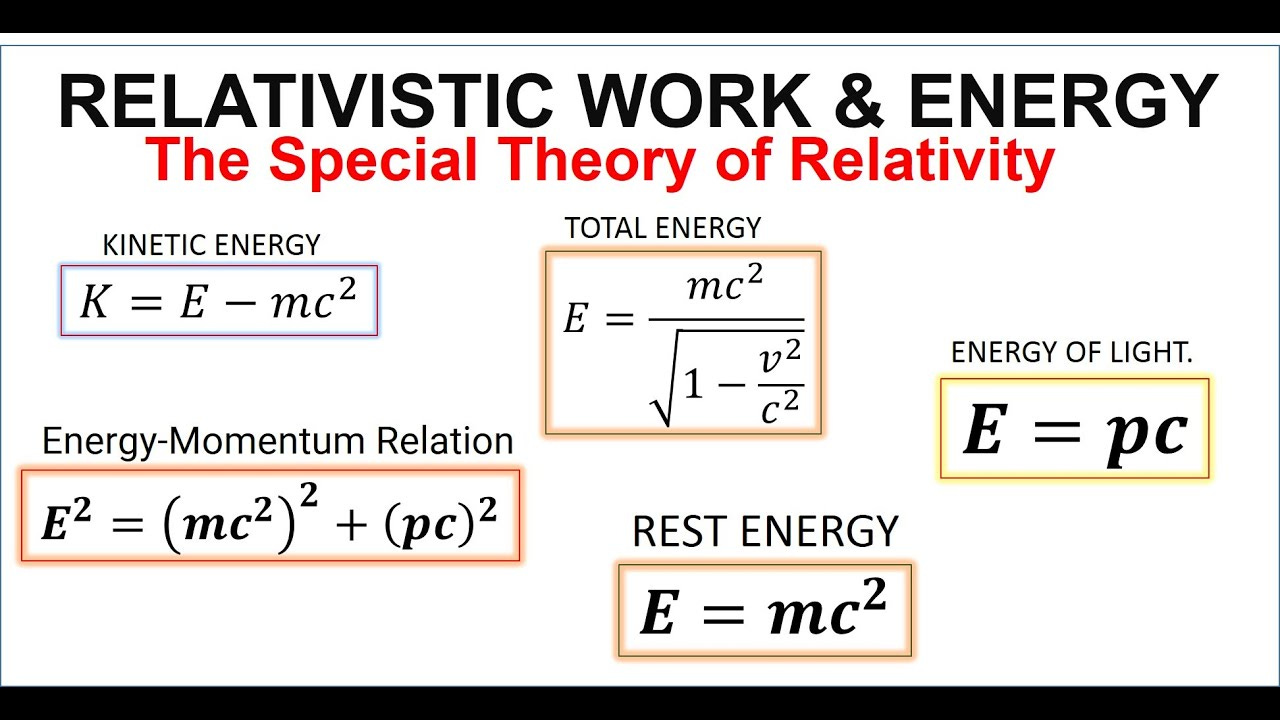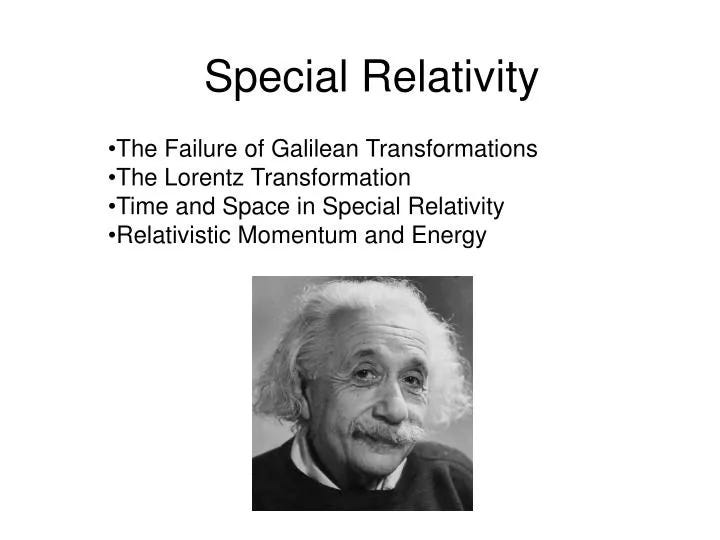Scientism and the Special Theory of Relativity. Part One (a), A layman’s overview of STR and an introduction of its potential defects.
An introduction to a complex but important topic that has many implications if any of its supposed 'proofs' are disproven.
Introduction
Why is Einstein’s Special Theory of Relativity or STR and its purported defects of importance with all that has gone on and is going on in our world? It is a very complex domain. Those of us who have spent time studying and investigating this topic know of its importance both in and out of science, especially given the often hysterical and exaggerated claims by its supporters as to the limitless wonders and knowledge it bestows on humanity. STR has indeed conferred proofs and benefits but much of it is entirely open to dispute though the single narrative of ‘the science’ will never discuss such issues.
There are many reasons for laypeople to dig into STR besides its practical usage in some technical and scientific applications.
First, anyone who studies STR objectively must notice that STR is one of the best examples in modern history of the cult of ‘science’ or Scientism, in which arcana and esoterica, often unrelated to physical evidence, become ‘laws’. From these ‘postulates’ one does notice the creation of entire industries and compliant media, replete with funding and power. This is now how ‘modern science’ operates. It often has little to do with physical science.
Second, the elevation of ‘science’ to cult like status, including ‘heroes’ like Einstein who are to be feted and worshipped, provides a cultural backdrop for totalitarianism as evidenced by the Corona plan-scam-demic in which ‘science’ (fiction only), with its priesthood of ‘scientists’ and ‘experts’ clinging to the only holy gospel of secular truth, were invoked as rationale for the complete destruction of freedom and rights. Corona can be accurately described as a pilot project of geo-Fascism. Scientism or the religion of science, is essential for a technocratic fascism, with its exalted prophets, priests, cardinals and bishops, against whom no heresy or heretic can stand.
Third, if there is a disconnect between STR and practical physical reality this must by default, retard and obstruct actual scientific advancement, especially in physics and cosmology. Entire tracts of both would need to be reassessed when enough brave souls dare to put STR to proper physical testing and assess its tautological inconsistencies. This includes the obvious issues and disproofs of the Big Bang theology.
Organisation of the discussion
The following is Part One of 4 articles on the topic, split into equal measure due to complexity and length.
Part One is split between (a) and (b) to introduce the subject. Part One (a) looks at the theory, its context and its primary focus. Part One (b) delves into the underlying mathematical models.
Part Two discusses the historical context of STR, and key antecedental and contemporary figures of Einstein including Maxwell, and Lorentz along with mathematical theorists like Minkowski who greatly influenced Einstein.
Part Three will focus on the famed scientist Herbert Dingle’s detailed and never answered critique of STR (the only replies were ad hominins and completing ignoring his maths and proofs). Dingle was of course slandered, attacked, and degraded but his many objections were never answered by either experimental proofs or logical mathematics.
Part Four will look at other general objections to STR and its many problems outside of Dingle’s complaint. Many of these are detailed, logical and experimentally based. They are of course dismissed as ‘outside the mainstream’ as if that is a serious defect. Part Four will also summarise the implications of what has been investigated.
Everyone should have a look
In short, any layperson with a curious mind, possessing average logical and mathematical skills can understand STR. The priests and prophets of the ‘science’, many of whom do not understand the theory, keep it cloaked in mystery and incense to elicit compliance and to evade incisive and debilitating questions. Can you imagine a schoolteacher reacting to a curious student’s statement, ‘yes teacher E=mc2 is interesting but has little to do with the theory of relativity, or relative motion and using that as proof is circular reasoning since it is embedded in the theorem’.
The abstract, closeted nature of theoretical arcana which are declared to be laws, is precisely why STR should be looked at. It is about time that ‘science’ rejoin reality and be forced to explain its ‘logic’ in plain terms, to common people. We should encourage questions and debate.
What is STR?
In 1905 Einstein issued his paper on STR which was divided into two parts:
I. Kinematical Section;
II. Electrodynamical Section.
Kinematics is the branch of mechanics concerned with objects in motion, but not with the forces involved and electrodynamics is the study of moving electric charges and their interaction with magnetic and electric fields. The whole essence of STR is contained in section I on kinematics, which is significant, though I found little commentary on it in the mainstream publications (more later).
STR is usually portrayed as a revolt against Newtonian mechanics. I am not sure this is correct. What Einstein was trying to do was correct some issues with Newton’s theorems on gravity – in particular the orbit of Mercury. He was trying to support it, not displace it. He offered the view that each object through gravity, can ‘curve’ the fabric of space and time around them, forming a sort of a depression, akin to a heavy object resting on your sofa cushion. Objects including your cat or light would fall into the depression. This is the space-time curve, which Newton did not know about, and which is now attributed to Einstein but it was not his ‘discovery’ but originally that of Minkowski a mathematician (more later).
What is General Theory of Relativity or GTR
GTR was developed in 1916, after the STR in 1905. GTR is simply an expanded generalisation of the relativity postulate found in STR. GTR describes the relationship between gravity and the supposed geometry of space-time, applied to all objects. STR by contrast focuses on the laws of physics being the same for all observers (more below) and is applied only to objects moving at a constant speed in a straight line (so not all use cases). GTR is more complex than STR because it includes gravity and acceleration which is not found in STR.
GTR explained the orbit of Mercury which Newton’s theory could not. I do think however, that if some of the assumpions of GTR are wrong (space-time, postulate 1 and inertia relativity, and clocks) and if a re-analysis of Mercury’s orbit is conducted, it too may come under attack. GTR is accepted by mainstream science as infallible. One area where GTR is utterly wrong is in the Big Bang theology, though you won’t hear any criticism from the mainstream science on this.
Another common understanding is that STR is consistent with GTR and is a special case of GTR under two conditions: (i) Only inertial reference frames are concerned. (ii) There is no existence of gravity. This means GTR always applies where STR applies. The difference as given below, is in the second STR postulate on light velocity.
Einstein’s STR Commandments
STR contains two postulates, or Thou Shall obeys which are explained in plainer language in the next section:
1) The postulate of relativity or the laws of physics are invariant (identical) in all inertial frames of reference (that is, frames of reference with no acceleration, meaning there is a relativity of motion between 2 objects, absence of an absolute standard of rest, that is, of an ether)
2) Light is always propagated in empty space with a definite velocity c which is independent of the state of motion of the emitting body (empty space is assumed to be a vacuum)
The casual reader will notice that the first postulate in which the laws of physics are identical (invariant) in all situations is simply unprovable. No one can test inertia relationships in every possible ‘frame of reference’. The layperson will also wonder about ‘ether’. Einstein rejected the ether theory, as does all mainstream science today. But this is rather absurd. Space is not a vacuum; it is full of particles. The argument is that they are not dense enough to affect light or relative motion between 2 objects. But how do we know this?
The rejoinder is a few experiments have proven it (especially and usually only Michelson-Morey in 1887, quite some time ago… dealt with later). What then is the mythical dark matter to make the Banging equations balance if not ether? And if electromagnetism is more important than gravity, than an ether or ‘plasma’ which is a part of this theory (Maxwell 1865), would totally negate this assumption and postulate. Few experiments into an ‘ether’ have ever been done and there is growing evidence it could well exist. But we digress.
A second observation is that the theory is wholly kinematical, or based on kinetic energy, namely the energy of an object in motion related to its mass. Electromagnetism, or the forces of electricity and magnetism, has nothing do with his theory. This is odd since the whole point of the exercise for Einstein was to ‘save’ the Maxwell-Lorentz theory, namely electro-magnetism, which is not the crux of his theorem, or more specifically its equations (not any physical proof of its relevancy, just the maths). What ends up happening is that the Maxwell-Lorentz theorems and maths are adjusted for STR to have them take into account relativity, and the space-time dimension (controversial in the views of many, more later).
STR is focused on ‘clocks’
Based on these 2 postulates we can say that STR focuses on the relationships between rigid bodies, their ‘relativity’ (postulate 1), or comparing their motions within ‘systems of co-ordinates’ which are just objects on a grid or axes, using postulate 2 or the velocity of light. STR is concerned with the objects (say 2 objects in relation to each other), with each object possessing a clock. A clock simply means an interval of time that can be measured, in which the Earth is the ‘home’ or ‘constant’ clock (including its rotation and orbit).
We can then move the objects around (increase velocity of one, keep the other static) and ‘observe’ what happens to their clocks or time intervals relative to each other, and to the static observer, or to a moving observer (more later). An observer is just a person who is witnessing the movement of an object (eg a train for Einstein, or in Galileo’s imagery a moving ship or a container in the hold of that ship).
In essence STR is trying to solve the clocked interval of time between 2 objects using light as a ‘signal’ and measure of change in velocity, motion and location. ‘Signals’, namely light emissions or beams from the objects, are used to both identify and measure location change and time intervals. Hence the complex maths involved. Time dilation is a key output from STR with moving objects appearing to clock slower to a static observer, than a stationary clock. As we will discover, there are however, issues with the relativistic time dilation of clocks within STR theory.
In simple terms we can say that STR as set out in Einstein’s 1905 paper, which is the canonical gospel of its faithful, is concerned with physical matter that we can observe namely, clocks, signals (light), instants, durations, distances, and events. These are indeed physical things which can be empirically measured. So far so good. Importantly STR in the 1905 paper defines the word ‘time’, to be that of an instant or duration not eternity. This is important.
STR and Time
STR in it is original construct, as written in Einstein’s paper, is thereby focused on the relativity of clocks, and is thus independent of concepts related to space and ‘eternity’ of time. Space-time is added later by Einstein’s former teacher Herbert Minkowski, a mathematics theorist, in 1908. Minkowski was not a physicist.
Space-time was added to STR since the mathematics (not an actual physical observable proof) was supposedly both supported and was confirmed by STR. Minkowski is an important and usually forgotten figure in developing the lore of STR infallibility. As well, ‘t’ as the variable for eternity is also a Minkowski invention, not found as stated above, in Einstein’s 1905 paper.
The next post looks at the mathematics of STR, including Maxwell and Lorentz, and the implications of STR in theory and practice. After that we get into the criticisms of STR. This post was intended to set the frame of reference and the basis for further investigation. It is a fiendishly difficult domain even for those of us who have spent time traversing its terrain.
However, as with most of the ‘settled science’, the truth is different than the standard narrative.
==Some sources
“Relativity: The Special and General Theory" by Albert Einstein
Available in English
“Spacetime Physics" by Edwin F. Taylor and John Archibald Wheeler
Introduces special relativity in a clear manner
"Special Relativity and Classical Field Theory: The Theoretical Minimum" by Leonard Susskind and Art Friedman
Detailed yet accessible exploration of special relativity and its connections to classical field theory.
"A Most Incomprehensible Thing: Notes Towards a Very Gentle Introduction to the Mathematics of Relativity" by Peter Collier
Explains the mathematical concepts behind relativity, good resource for those who want to understand the mathematics without diving too deeply into complex equations.
"Faster Than the Speed of Light: The Story of a Scientific Speculation" by João Magueijo
This book presents a dissenting view on certain aspects of relativity, disavowed by the mainstream.







I'm interested but is the bashing of Einstein necessary? Why is the tone to aggressive?